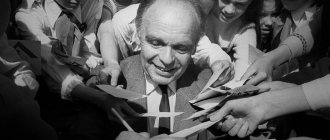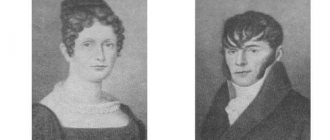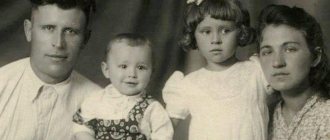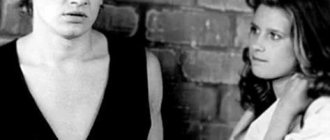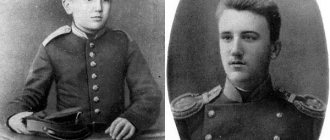Childhood and youth
In the winter of 1770, Ludwig van Beethoven was born in a poor quarter of Bonn. The baby's baptism took place on December 17. The boy's grandfather and father are distinguished by their singing talent, so they work in the court chapel. A child’s childhood years can hardly be called happy, because a constantly drunk father and a miserable existence do not contribute to the development of talent.
Portrait of Ludwig van Beethoven
Ludwig remembers with bitterness his own room, located in the attic, where there was an old harpsichord and an iron bed. Johann (father) often got drunk to the point of unconsciousness and beat his wife, taking out his evil. My son also received beatings from time to time. Mom Maria dearly loved the only surviving child, sang songs to the baby and brightened up the gray, joyless everyday life as best she could.
Ludwig showed musical abilities at an early age, which Johann immediately noticed. Envious of the fame and talent of Amadeus Mozart, whose name is already thundering in Europe, he decided to raise a similar genius from his own child. Now the baby’s life is filled with exhausting lessons in playing the piano and violin.
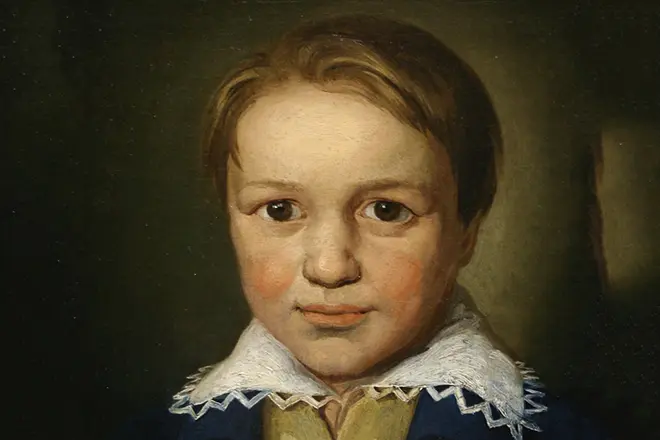
Ludwig Van Beethoven as a child
The father, discovering the boy’s talent, forced him to practice 5 instruments simultaneously - organ, harpsichord, viola, violin, flute. Young Louis spent hours poring over playing music. The slightest mistakes were punished by flogging and beatings. Johann invited teachers to his son, whose lessons were mostly mediocre and unsystematic.
The man sought to quickly teach Ludwig concert performance in the hope of royalties. Johann even asked for an increase in salary at work, promising to place his gifted son in the archbishop's chapel. But the family did not live any better, as the money was spent on alcohol. At the age of six, Louis, urged by his father, gives a concert in Cologne. But the fee received turned out to be tiny.
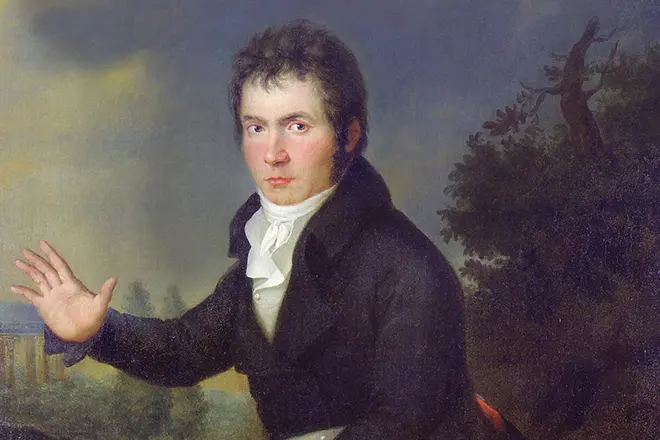
Ludwig Van Beethoven in his youth
Thanks to his mother's support, the young genius began to improvise and take notes on his own works. Nature generously endowed the child with talent, but development was difficult and painful. Ludwig was so immersed in the melodies created in his mind that he could not get out of this state on his own.
In 1782, Christian Gottloba was appointed director of the court chapel, who became Louis's teacher. The man saw glimpses of talent in the young man and began to educate him. Realizing that musical skills do not provide full development, he instills in Ludwig a love of literature, philosophy and ancient languages. Schiller, Goethe, Shakespeare become the idols of the young genius. Beethoven eagerly studied the works of Bach and Handel, dreaming of working together with Mozart.
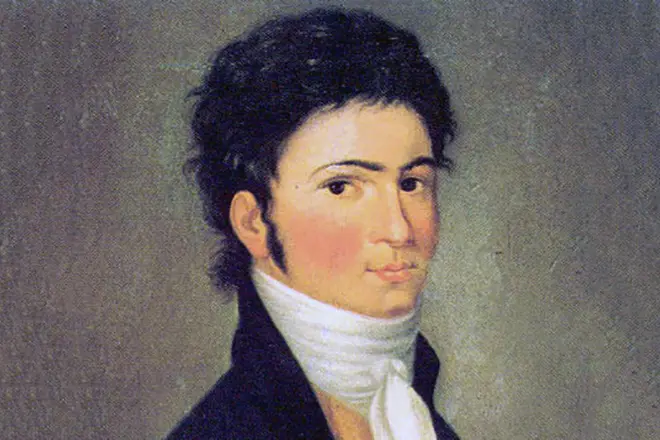
Ludwig Van Beethoven in his youth
The young man first visited the musical capital of Europe, Vienna, in 1787, where he met Wolfgang Amadeus. The famous composer, having heard Ludwig’s improvisations, was delighted. To the astonished audience, Mozart said:
“Keep your eyes on this boy. One day the world will talk about him.”
Beethoven agreed with the maestro on several lessons, which had to be interrupted due to his mother’s illness.
Returning to Bonn and burying his mother, the young man plunged into despair. This painful moment in his biography had a negative impact on the musician’s work. The young man is forced to look after his two younger brothers and endure his father's drunken antics. The young man turned to the prince for financial help, who assigned the family an allowance of 200 thalers. The ridicule of the neighbors and the bullying of the children greatly hurt Ludwig, who said that he would get out of poverty and earn money through his own labor.

Monument to Ludwig van Beethoven
The talented young man found patrons in Bonn who provided him with free access to musical meetings and salons. The Breuning family took custody of Louis, who taught music to their daughter Lorchen. The girl married Dr. Wegeler. Until the end of his life, the teacher maintained friendly relations with this couple.
Ludwig Van Beethoven as a child
The father, discovering the boy’s talent, forced him to practice 5 instruments simultaneously - organ, harpsichord, viola, violin, flute. Young Louis spent hours poring over playing music. The slightest mistakes were punished by flogging and beatings. Johann invited teachers to his son, whose lessons were mostly mediocre and unsystematic.
The man sought to quickly teach Ludwig concert performance in the hope of royalties. Johann even asked for an increase in salary at work, promising to place his gifted son in the archbishop's chapel. But the family did not live any better, as the money was spent on alcohol. At the age of six, Louis, urged by his father, gives a concert in Cologne. But the fee received turned out to be tiny.
Music
In 1792, Beethoven went to Vienna, where he quickly found friends and patrons of the arts. To improve his skills in instrumental music, he turned to Joseph Haydn, to whom he brought his own works for testing. The relationship between the musicians did not work out right away, as Haydn was annoyed by the obstinate student. Then the young man takes lessons from Schenck and Albrechtsberger. He improves his vocal writing together with Antonio Salieri, who introduced the young man to the circle of professional musicians and titled persons.
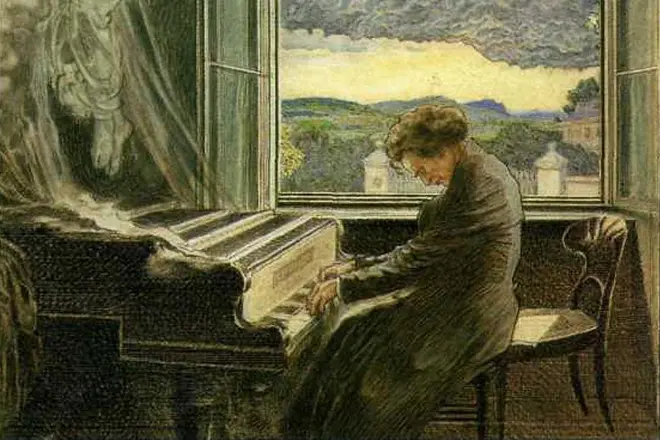
Ludwig van Beethoven at the piano
A year later, Ludwig van Beethoven created music for the “Ode to Joy,” written by Schiller in 1785 for the Masonic lodge. Throughout his life, the maestro modifies the anthem, striving for a triumphant sound of the composition. The public heard the symphony, which caused frantic delight, only in May 1824.
Beethoven soon became a fashionable pianist in Vienna. In 1795, the young musician made his debut in the salon. Having played three piano trios and three sonatas of his own composition, he charmed his contemporaries. Those present noted Louis's stormy temperament, richness of imagination and depth of feeling. Three years later, the man is overtaken by a terrible disease - tinnitus, which develops slowly but surely.
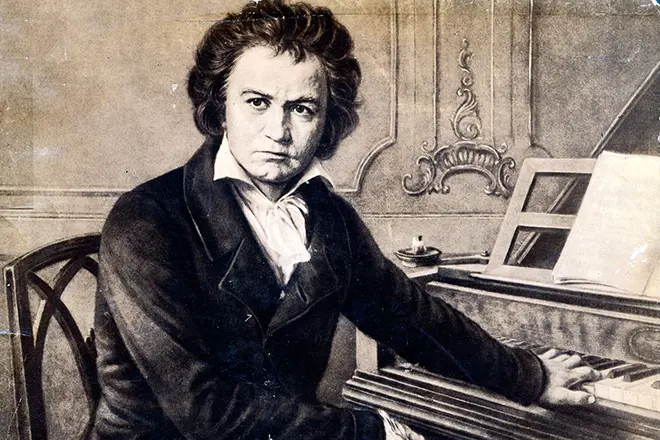
Composer Ludwig van Beethoven
Beethoven hid his illness for 10 years. Those around him did not even realize that the pianist had begun to become deaf, and his slips and answers were inadvertently attributed to absent-mindedness and inattention. In 1802 he wrote the “Heiligenstadt Testament” addressed to his brothers. In the work, Louis describes his own mental suffering and worry about the future. The man orders this confession to be announced only after death.
In the letter to Dr. Wegeler there is a line: “I will not give up and will take fate by the throat!” The love of life and expression of genius were expressed in the enchanting “Second Symphony” and three violin sonatas. Realizing that he will soon become completely deaf, he eagerly gets to work. This period is considered the heyday of the work of the brilliant pianist.
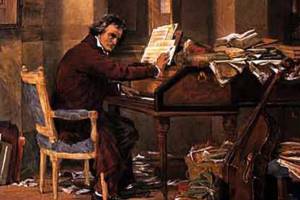
Ludwig van Beethoven writes his second symphony
The “Pastoral Symphony” of 1808 consists of five movements and occupies a special place in the life of the master. The man loved to relax in remote villages, communicate with nature and think about new masterpieces. The fourth movement of the symphony is called “Thunderstorm. Storm”, where the master conveys the riot of the raging elements, using piano, trombones and piccolo flute.
In 1809, Ludwig received a proposal from the management of the city theater to write musical accompaniment for Goethe’s drama “Egmont”. As a sign of respect for the writer’s work, the pianist refused any monetary reward. The man wrote music in parallel with theater rehearsals. Actress Antonia Adamberger joked with the composer, admitting to him his lack of singing talent. In response to the puzzled look, she skillfully performed the aria. Beethoven did not appreciate the humor and said sternly:
“I see that you can still perform overtures, so I’ll go and write these songs.”
From 1813 to 1815 he wrote fewer works, as he finally lost his hearing. A brilliant mind finds a way out. Louis uses a thin wooden stick to “hear” the music. One end of the plate is clamped with the teeth, and the other is leaned against the front panel of the instrument. And thanks to the transmitted vibration, he feels the sound of the instrument.
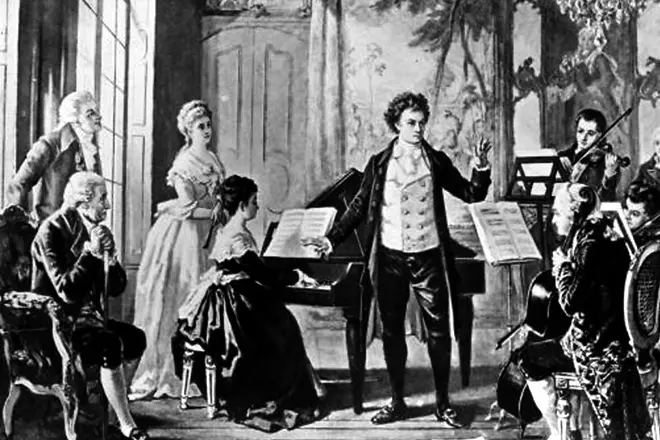
Ludwig van Beethoven in society
The compositions of this life period are filled with tragedy, depth and philosophical meaning. The works of the greatest musician become classics for contemporaries and descendants.
last years of life
The last years of his life in the biography of L. Beethoven were difficult. The year 1812 was marked by the fact that the composer's creative activity dropped significantly. It was a stagnation that lasted about 3 years, then Beethoven took up his work with the same strength and enthusiasm. At this time, many piano sonatas, cello sonatas, quartets and even a vocal cycle were created.
The composer even began to arrange folk songs. Particularly valuable during this period of time are Beethoven's works - “Solemn Mass” and Symphony No. 9 with choir. The performance of the ninth symphony took place in 1824; after the performance, the audience received the composition with thunderous applause; Ludwig stood with his back to the audience all this time and did not hear this delight. One of the singers turned the composer to face the audience, who applauded while standing and waved their hats and scarves. This went on for so long that the police had to demand that it stop. Such expressions of delight were accepted only in relation to the person of the emperor, but not to an ordinary composer. That time was politically turbulent, freedom of speech and thought was quickly suppressed, but Beethoven was not afraid to express his opinion. The police did not touch him; they were frightened by the incredible popularity of the composer.
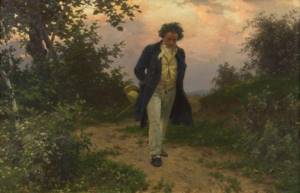
Personal life
The personal life story of the gifted pianist is extremely tragic. Ludwig was considered a commoner among the aristocratic elite, and therefore had no right to lay claim to noble maidens. In 1801 he fell in love with the young Countess Julie Guicciardi. The feelings of the young people were not mutual, since the girl was simultaneously dating Count von Gallenberg, whom she married two years after they met. The composer expressed the torment of love and the bitterness of losing his beloved in the “Moonlight Sonata,” which became a hymn to unrequited love.
From 1804 to 1810, Beethoven was passionately in love with Josephine Brunswick, the widow of Count Joseph Deim. The woman enthusiastically responds to the advances and letters of her ardent lover. But the romance ended at the insistence of Josephine’s relatives, who are sure that a commoner would not be a worthy candidate for a wife. After a painful breakup, a man proposes to Teresa Malfatti out of principle. Receives a refusal and writes the masterpiece sonata “Für Elise”.
The emotional turmoil he experienced so upset the impressionable Beethoven that he decided to spend the rest of his life in splendid isolation. In 1815, after the death of his brother, he became embroiled in a legal battle over the custody of his nephew. The child's mother has a reputation as a woman who goes out for a walk, so the court satisfied the musician's demands. It soon became clear that Karl (nephew) had inherited his mother’s bad habits.
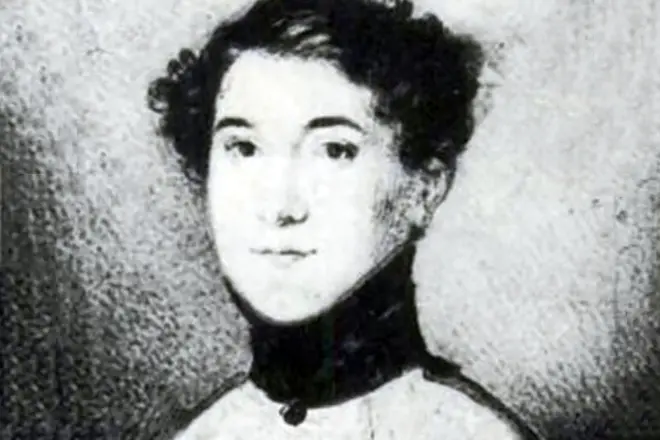
Karl, nephew of Ludwig van Beethoven
The uncle raises the boy strictly, tries to instill a love of music and eradicate alcohol and gambling addiction. Having no children of his own, the man is not experienced in teaching and does not stand on ceremony with the spoiled young man. Another scandal leads the guy to attempt suicide, which was unsuccessful. Ludwig sends Karl to the army.
Beethoven's pedagogical activity
It is impossible to tell a short biography of Beethoven without mentioning his students. The composer began teaching music while still living in his hometown. His first student remained Beethoven's faithful and devoted friend until the last day of his life.
Ludwig's next student was the young Countess Juliet. The composer was in love with a girl and was seriously thinking about marrying her. There is an opinion that he dedicated the famous “Moonlight Sonata” to her. Another student of Beethoven was Teresa Brunswik. She had musical talent, masterfully played the piano, conducted and sang beautifully, but she decided to devote her life to raising children. They maintained a long and strong friendship with Beethoven.
Dorothea Ertmann, a popular German pianist, was also a student of the composer. The first and only child Beethoven taught was Carl Cheney. He was only nine years old, but he was already performing in concerts. For a long time he called the composer Robinson Crusoe, because his apartment was always a mess, and Beethoven’s appearance left much to be desired. Karl studied with the composer for about five years. However, none of Beethoven's students inherited his playing style. Each brought personal characteristics to their work. This once again proves that Beethoven was not only a great composer, but also an outstanding mentor.
Death
In 1826, Louis caught a cold and contracted pneumonia. The pulmonary disease was accompanied by stomach pain. The doctor incorrectly calculated the dosage of the medicine, so the malaise progressed daily. The man was bedridden for 6 months. At this time, Beethoven was visited by friends trying to ease the suffering of the dying man.
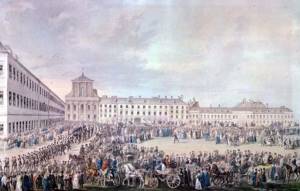
Funeral of Ludwig van Beethoven
The talented composer died at the age of 57, on March 26, 1827. On this day, a thunderstorm raged outside the windows, and the moment of death was marked by a terrible thunderclap. During the autopsy, it turned out that the master’s liver had decomposed and the auditory and adjacent nerves were damaged. Beethoven is seen off on his last journey by 20,000 townspeople; the funeral procession is led by Franz Schubert. The musician was buried in the Waring cemetery of the Holy Trinity Church.
Ludwig van Beethoven at the piano
A year later, Ludwig van Beethoven created music for the “Ode to Joy,” written by Schiller in 1785 for the Masonic lodge. Throughout his life, the maestro modifies the anthem, striving for a triumphant sound of the composition. The public heard the symphony, which caused frantic delight, only in May 1824.
Beethoven soon became a fashionable pianist in Vienna. In 1795, the young musician made his debut in the salon. Having played three piano trios and three sonatas of his own composition, he charmed his contemporaries. Those present noted Louis's stormy temperament, richness of imagination and depth of feeling. Three years later, the man is overtaken by a terrible disease - tinnitus, which develops slowly but surely.
Interesting Facts
- At the age of 12 he published a collection of variations for keyboard instruments.
- He was considered the first musician to whom the city council assigned a financial allowance.
- Wrote 3 love letters to the “Immortal Beloved”, found only after death.
- Beethoven wrote a single opera called Fidelio. There are no other similar works in the master’s biography.
- The greatest misconception of contemporaries is that Ludwig wrote the following works: “Music of Angels” and “Melody of Tears of Rain.” These compositions were created by other pianists.
- He valued friendship and helped those in need.
- Could work on 5 works at the same time.
- In 1809, when Napoleon bombed the city, he was worried that he would lose his hearing from the shell explosions. Therefore, he hid in the basement of the house and covered his ears with pillows.
- In 1845, the first monument dedicated to the composer was opened in Beaune.
- The Beatles' song "Because" is based on the "Moonlight Sonata" played in reverse.
- “Ode to Joy” has been designated as the anthem of the European Union.
- Died from lead poisoning due to medical error.
- Modern psychiatrists believe that he suffered from bipolar disorder.
- Photographs of Beethoven are printed on German postage stamps.
Ludwig van Beethoven writes his second symphony
The “Pastoral Symphony” of 1808 consists of five movements and occupies a special place in the life of the master. The man loved to relax in remote villages, communicate with nature and think about new masterpieces. The fourth movement of the symphony is called “Thunderstorm. Storm”, where the master conveys the riot of the raging elements, using piano, trombones and piccolo flute.
In 1809, Ludwig received a proposal from the management of the city theater to write musical accompaniment for Goethe’s drama “Egmont”. As a sign of respect for the writer’s work, the pianist refused any monetary reward. The man wrote music in parallel with theater rehearsals. Actress Antonia Adamberger joked with the composer, admitting to him his lack of singing talent. In response to the puzzled look, she skillfully performed the aria. Beethoven did not appreciate the humor and said sternly:
“I see that you can still perform overtures, so I’ll go and write these songs.” From 1813 to 1815 he wrote fewer works, as he finally lost his hearing. A brilliant mind finds a way out. Louis uses a thin wooden stick to “hear” the music. One end of the plate is clamped with the teeth, and the other is leaned against the front panel of the instrument. And thanks to the transmitted vibration, he feels the sound of the instrument.

